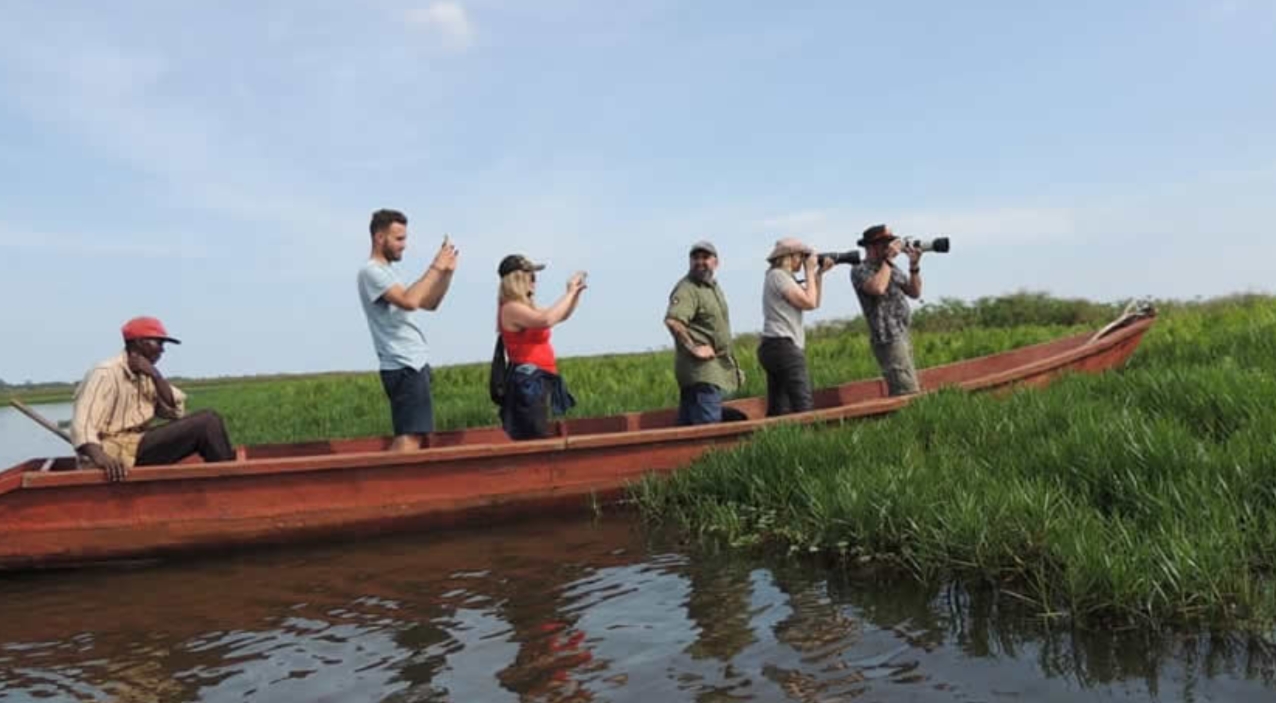
When to Visit Mabamba Wetland
When to Visit Mabamba Wetland: All year long, Mabamba Wetland is a top birding destination, but the dry months are better because the water levels are consistently low and calm because of waning winds. This makes it easier to navigate the papyrus swamp in search of a variety of bird species, especially the well-known shoebill and others. Bird species typically arrive from the deeper reaches of the marsh to look for food and other supplies; thus, the dry season is ideal for them.
Travellers should also be aware that the ideal times of day to see the elusive Shoebill are at sunrise and sunset or in the morning and evening, when there is less fishing activity and more activity from bird species looking for food. June through September and December through February are always the dry season months. It is also convenient for photographers to get the greatest images during the dry season when the weather is clear.
When to visit Mabamba Wetland
The marsh is open year-round, especially for birdwatchers who come here year-round to track shoebills. The boatmen, however, usually provide visitors with covered boats and other equipment in the marsh during the wet season. During the wet season or the heavy rains, shoebills remain in one place because they can’t fly when it’s raining; therefore, they remain stiff and prepared to pounce on their prey.
In the morning, when the weather is still calm and the waters are decreasing, Mabamba Swamp offers a 95% chance of witnessing the elusive Shoebill, making it the ideal time of day to seek a variety of bird species. However, when the sun is out, birds tend to fly to escape the blazing sun, hence hindering your chances of spotting these bird species, among others.
Shoebill tracking in Mabamba Swamp is always conducted during sunrise and sunset hours, along the lake shores of the mighty Lake Victoria. A visit to the Equator landmark or a stroll along the shores of Lake Victoria, however, might be incorporated into the itinerary after the tracking experience. Other things to do include going on boat trips, sport fishing, canoeing, and visiting nearby fishing villages and community events. As a result, visits to Mabamba Swamp are most enjoyable during the dry season and in the morning, particularly at sunrise.
Location-Following when to visit Mabamba Wetland
The swamp is located in the northern part of Lake Victoria, west of Entebbe town. Lake Victoria is the largest lake in Africa and the third-largest freshwater lake globally, behind Lake Michigan in the United States and Lake Huron in Canada. The expansive marsh is a unique location, as one of the best places to see the famous shoebill. Any birdwatcher should witness this unusual prehistoric bird with a form reminiscent of the Mesozoic era.
Bird species in Mabamba Swamp-when to visit Mabamba Wetland
Bird species include the White-winged Warbler, Winding Cisticola, Fork-tailed Drongo, Saddle-billed Stork, Little Egret, Banded Martin, White-faced Whistling Duck, Olivaceous Warbler, Grey-headed Sparrow, Black-winged Stilt, Papyrus Yellow Warbler, Pied Kingfishers, Ashy Flycatcher, Pallid Harrier, and Papyrus Gonolek. Pink-tailed Whydah, Red-billed Firefinch, Black-crowned Night Heron, Mosque Swallow, Red-eyed Dove, Long-toed Lapwing, African Purple, Marsh Harrier, Great White Pelican, Slender-billed Weaver, Great Cormorant.
Swamp-hen, Cattle Egret, Grey Woodpecker, Grey Crowned Crane, Rufous-naped Lark, African Firefinch, Black Crake, Eastern Grey Plantain-eater, Grey-rumped Sparrow, Red-headed Lovebird, Common Stonechat, White-browed Cuckoo, Fan-tailed Widowbird, Common Greenshank, Great Blue Turaco, Ruppell’s Long-tailed Sterling, Common Bulbul, White-shouldered Tit, Feral Pigeon, Grey-headed Kingfisher, Carruthers’s Cisticola, Goliath Heron, Long-crested Eagle, Yellow-billed Duck, and the Red-shouldered Cuckoo Shrike. Others include Grey Wagtail, Grey Heron, Slender-billed Gull, Green Cuckoo, Sand Martin,
Following when to visit mabamba wetland, other notable birds include Crowned Hornbill, Ross’s Turaco, Yellow-rumped Tinkerbird, Yellow Wagtail, Black-headed Heron, Intermediate Egret, Angola Swallows, Yellow-billed Kite, Common Squacco Heron, Blue-breasted Bee-eater, Brown Parrot, African Pied Wagtail, Yellow-billed Stork, Common Waxbill, Spur-winged Lapwing, Northern Brown-throated Weaver, Common Sandpiper, Black-faced Rufous Warbler, African Hoopoe, Yellow-backed Weaver, Black-headed Gonolek, African Common Moorhen, Pink-backed Pelican, Pied Wagtail, Cormorants, White-winged Tern, Eurasian Hobby, Glossy Ibis, White-throated Bee-eater, Village Weaver, Swamp Flycatcher,
White-browed Cuckoo, Black-headed Woodland Kingfisher, Malachite Kingfisher, Orange Weaver, Fulvous Whistling Duck, Great White Egret, Grassland Pipit, Long-tailed Cormorant, Purple Heron, Shining Blue Kingfisher, Red-chested Cuckoo, Rufous-bellied Heron, Black-crowned Waxbill, Flappet Lark, African Green Pigeon, Yellow Warbler, Double-toothed Barbet, Grey Parrot, and several other birds.
Accessing Mabamba Wetland-When to Visit Mabamba Wetland
Following when to visit Mabamba Wetland, it is considerably easier for visitors arriving from Kampala and Entebbe to reach there, since it’s along the shores of Lake Victoria. Drive to the Nakiwogo landing site from Entebbe by boat, then take a ferry to the Kasanje landing site. From there, drive for roughly 20 minutes to Mabamba Swamp while taking in the stunning views of Lake Victoria. It takes approximately 1.30 hours for people from Kampala to travel to Mabamba via Nakawuka-Kasanje Road, depending on the traffic and time of day.
